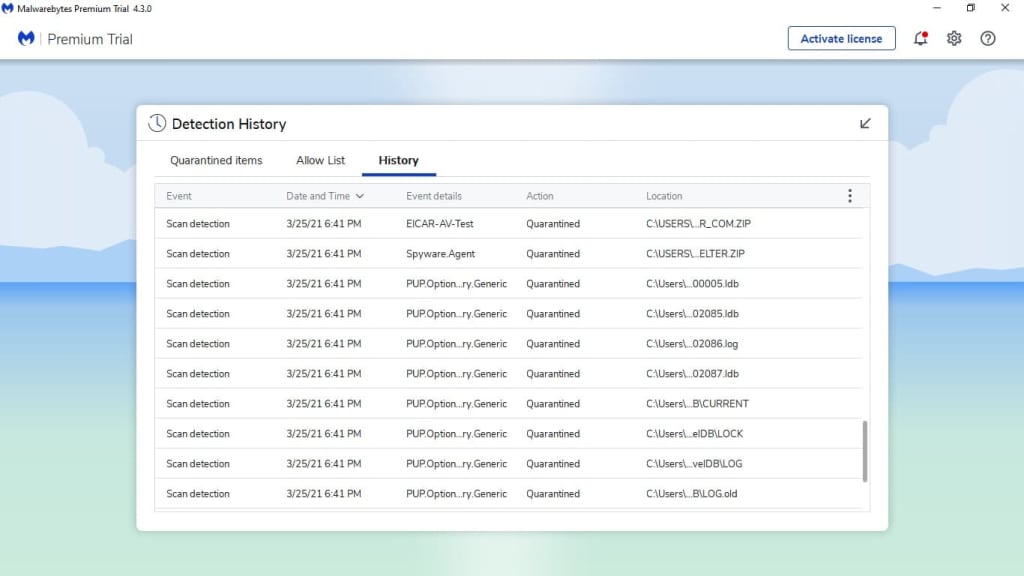


As soon as users become wise about the tech support scams and stop calling the fake tech support numbers and paying the overpriced fees for fake assistance in cleaning their devices (which aren't actually infected in the first place), those too will vanish and some new method of scam/attack will emerge. It's the reason we had fake/rogue AVs as one of the most common/prominent threats at one time, but today virtually none of those exist, both because security vendors have become proficient at detection/stopping them, and because users have become educated about what they are and not to fall for their tactics of extortion, so instead they moved on to what we have now which is ransomware and tech support scams, by far the two most common threats over the past couple of years (not the only ones, but definitely the most common, especially if you don't count PUPs, which have always been very common, though there are more which are bundled with real malware these days) because those tactics are still working and reaping profits for the bad guys. This is also why the bad guys' tactics will change completely every so often where they suddenly pretty much abandon one method of attack/infection and move on to something completely different. etc.) because no matter what the actual script/code of the exploit may look like, the basic fundamental methods of execution and infiltration to perform its malicious tasks remain constant.

#Malwarebytes 3 reviews code#
This is the very reason that Malwarebytes never tried using signatures to detect malicious scripts and exploit code, because it is far too easy to modify and/or encrypt such attacks to bypass traditional signature based detection tools, and this is also why the Exploit Protection layer in Malwarebytes is by far one of the most proactive and effective layers of defense against modern threats because changes to the malicious scripts, including advanced/custom encryption routines become irrelevant because it isn't analyzing the contents of their scripts, but instead looks directly at process behavior (such as malicious code injection, attempts at OS security layer bypass like privilege escalation, DEP violation etc., memory buffer overflow attacks etc.
#Malwarebytes 3 reviews software#
This is also why, when a signature is removed from the database, even if it is solely because that threat has not been seen in the wild, it is even further justified because it doesn't mean that just that one file hasn't been seen, but any threat that the signature being removed would detect has not been seen which is generally the result of the bad guys moving on to a completely new threat/method of attack, and just like all software developers, the bad guys very seldom (practically never, really) return to their old code, because they know that because those methods/samples have already been seen by the security researchers throughout the industry, that the various AV/AM products (including Malwarebytes) will likely be able to detect it without even needing an update, and this is especially true now that Malwarebytes and other vendors are relying more and more on behavior based, signature-less detection methods, so whatever the bad guys do to attempt to evade detection, it must be something dramatically different and new, otherwise it will trip one or more of the user's layers of defense in their AV/AM product(s) and the attack will fail. When a Malwarebytes threat researcher analyzes a malware sample and goes to work on writing a signature/def to detect it, their goal is not just to target that specific file/sample, but to target/detect as many similar samples that might exist currently, may have existed in the past, and may not even have been created yet using that single signature/definition. Of course, but even beyond that, it is very often the case that when a threat signature is removed from the Malwarebytes database it is because it has been replaced by a superior and more advanced heuristics signature or algorithm that detects the same threat(s) as the one that was removed in addition to even more threats/threat families.
#Malwarebytes 3 reviews windows#
MWB can also cull those older threats because in its default / recommended configuration, it sits on top of Windows Defender which can continue to deal with the look up and isolation of older threats, if they arise.


 0 kommentar(er)
0 kommentar(er)
